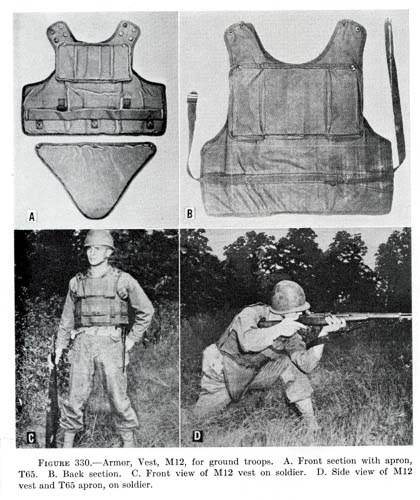This article from the McClatchy papers makes clear that the collapse of the Shia dominated Iraqi Army was arranged. See: “Iraqi soldier who fought with Americans says decision to flee left him feeling ashamed” By Hannah Allam and Mohammed al Dulaimy.
While this explains a great deal why the American intelligence community was blindsided by the collapse, it leaves a huge strategic level issue for the Obama Administration. Will they protect American hired private military corporation personnel from torture-murder by the Islamic State of Iraq and Syria (ISIS) Forces? The failure to do so would be a huge strategic blunder that would cripple American conventional force projection for literally decades.
Why this is requires explaining “LOGCAP.”
LOGCAP Explained
LOGCAP or “Logistics Civil Augmentation Program” was established in 1985 primarily to pre-plan for contingencies and to “leverage existing civilian resources.” It was not really used in a large way until the 1st Gulf War of 1990-1991, to take advantage of the Saudi and Gulf States civil economies to replace uniformed American logistical support. This was as much a political move by the Pres. George H.W. Bush Administration to manage American anti-war, and primarily Democratic anti-war, opposition to retaking Kuwait as it was a logistical exercise. (Hold that thought!)
LOGCAP was later expanded by the Clinton Administration to cover “operations other than war” in places like Somalia, Southwest Asia, Haiti, the Balkans, and East Timor. This allowed the Clinton Administration to exercise a muscular and multi-lateral foreign policy with the minimum of senior uniformed military opposition. Opposition which balked at “operations other than war” as the American Senior military leadership’s version of the “Vietnam War syndrome,” as the US Army’s deployments during the Kosovo war made clear.
This Clinton Administration “work around” approach to American military “Flag Rank” opposition was hugely apparent with the Croat “Operation Storm” in Bosnia, where “Military Professional Resources Incorporated” acted as an American military surrogate to plan the Croat Offensive that broke Serbian power in Bosnia.
Effectively “Private Military Corporation” contractor support has been the keystone of American military power projection since the 2nd Clinton Administration. This fact has been documented in a lot of places. See this July 2000 article from US Army Logistician Magazine — Contingency Contracting in East Timor — or this more recent Defense Industry Daily article that speaks to the most recent LOCGCAP 4 contract — LOGCAP 4: Billions of Dollars Awarded for Army Logistics Support.
LOGCAP after 9/11/2001
The two Pres. George W. Bush Administrations further expanded the use of LOGCAP after 9-11-2001, not only to manage public opposition to the “War on Terror” but also as a “Fight the War on the Cheap” exercise because your average logistics/garrison specialist first class (SFC) with government income, free medical care, education benefits, and housing allowances for three dependents earn earns arguably 125-150K in “benefits.” A DynCorp or KBR contractor costs the US government up to twice what a SFC costs in terms of annual income, but it is a known, predictable, fixed cost incurred and gone; whereas the Federal government will pay for the SFC and his dependents for another 20+ years in terms of benefits obligated by service.
This was in fact one of the reasons Democrats in Congress hated private military corporations doing uniformed military work in the War on Terror. Their extensive use in the 1st Gulf War plus the on-going operations in Iraq and Afghanistan hugely reduced the long term opportunity for graft and corruption via the Congressional administration of uniformed veterans education and medical benefits.
LOGCAP as a Foreign Policy Disaster
LOGCAP in Iraq and Afghanistan is only part of the private military corporation portfolio. The DEA uses a number of private military corporations in the Drug wars in Latin America for aerial electronic surveillance and training of local security forces. The American government also uses a number of private military corporations to furnish spares for things like the ATK built AC208B light gunship in Iraq.
The torture-murder of any of those Iraq private military contractors will utterly cripple current American foreign policy as implemented since the late 1990’s by the Defense Department regional commanders.
The lack of trust such a mass abandonment of private military contractors by the Obama Administration — a lack of trust that is already bad since the abandonment of both the American Ambassador and his private military contractor bodyguards at Benghazi, Libya — will result in demands for far more money up front in the form of letters of credit in foreign banks not under US Government control to pay for both private pre-paid “go to hell plan” preparations and death benefits.
That sort of change will increase private military corporation contractor support costs to such a degree that it will require uniformed US military in much larger numbers to replace private military corporations. The functional impact will be the reducing of American military type “hard power” projection world-wide for decades…and increase the amount of graft flowing through Democratic interest groups if the security threat warrants the use of a lot of uniformed military to address an existential foreign threat.
Isn’t it funny how things work out like that with the Obama Administration?
